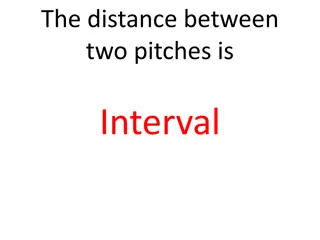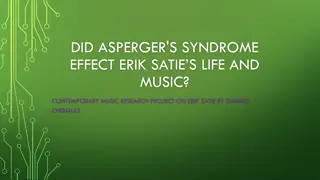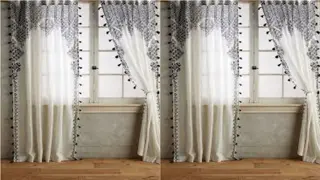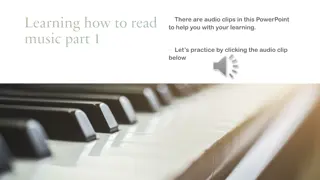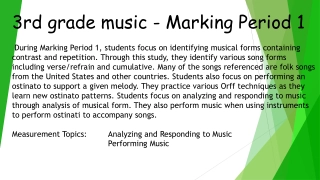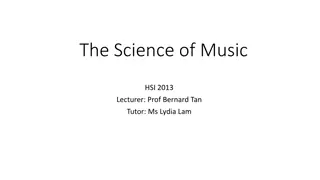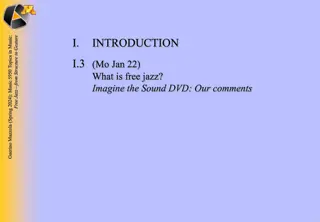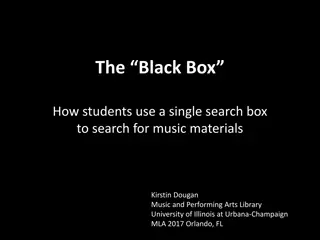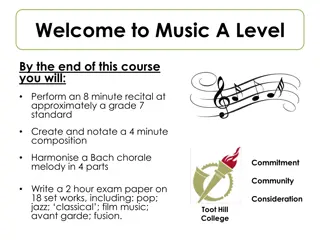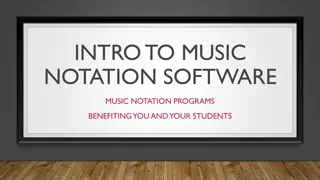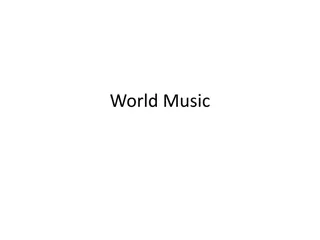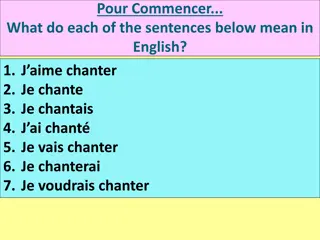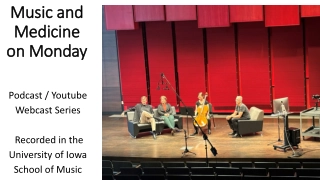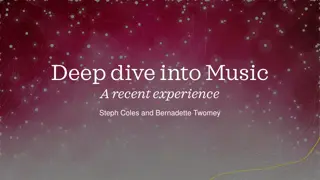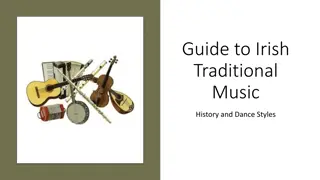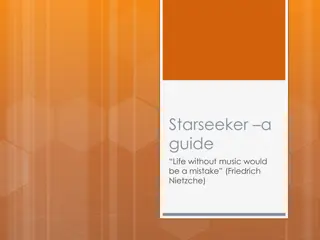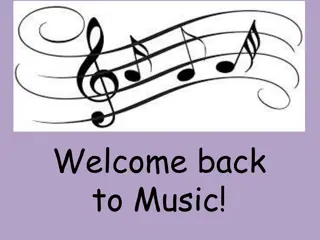Understanding Music: Elements and Characteristics Explained
Explore the diverse elements that make up music, from melody and articulation to dynamics, time/tempo, structure, harmony, and instruments. Learn about the nuances of each aspect, including melody registers, articulation techniques, dynamic variations, tempo changes, structural formats, harmonic principles, and instrument types. Enhance your understanding of music composition and performance through this detailed breakdown of musical elements.
Uploaded on Sep 24, 2024 | 0 Views
Download Presentation

Please find below an Image/Link to download the presentation.
The content on the website is provided AS IS for your information and personal use only. It may not be sold, licensed, or shared on other websites without obtaining consent from the author. Download presentation by click this link. If you encounter any issues during the download, it is possible that the publisher has removed the file from their server.
E N D
Presentation Transcript
DESCRIBING MUSIC USING Mad t- shirt
MELODY Register how high or low the notes are Range the distance from the lowest note to the highest: wide or narrow Sequence a pattern that repeats, ascending or descending Scalic (moving in a scale) or broken chord (moving in chord shapes) movement Steps (going to a next-door note) or leaps (jumping to a note further away) Ornaments (extra notes added to decorate) Melodic ostinato/riff: a repeating pattern
ARTICULATION Strummed on a guitar or ukulele, playing all the notes of a chord Finger-picking on guitar or uke, playing individual notes one at a time Sustained notes that are held on Stab a short, accented chord Staccato short, detached notes Legato notes that join smoothly together Slurred on a voice/wind instrument, going from one pitch to another without articulating the new note Pizzicato on a violin or cello, plucking the string Arco on a violin or cello, using the bow Accents notes that are louder than the surrounding notes
DYNAMICS Pianissimo very quiet Piano - quiet Mezzopiano fairly quiet Mezzoforte fairly loud Forte - loud Fortissimo very loud Crescendo getting louder Diminuendo getting quieter
TIME/TEMPO Number of beats in a bar - how the pulse is divided up; the number we count up to. Written as a time signature. Tempo - speed Accellerando getting faster Rallentando getting slower
STRUCTURE How many sections What order Which sections are the same Ternary form: ABA 12-bar blues Pop song structure: intro/verse/chorus/bridge/ outro
HARMONY Major or minor major sounds happy, minor sounds sad Inversions when you flip the order of the notes in a chord Consonant not clashy Dissonant - clashy Key change Added notes in chords such as 7th in G7 Harmonic rhythm how often the chords change, i.e. once per bar Drone/pedalnote a long note under or over the rest of the music Blue notes - notes from outside the scale being used, put in to sound jazzy
INSTRUMENTS Strings: violin/viola/cello/double bass /harp played by plucking or bowing Woodwind: flute/oboe/clarinet/bassoon/piccolo or saxophone played by blowing into a mouthpiece, which may have a reed Brass: trumpet/horn/trombone/tuba played by buzzing lips on a cup-shaped mouthpiece Percussion: timpani/snare/cymbals/ xylophone (and many others) played by hitting or shaking Voices: soprano/alto/tenor/bass Keyboards: piano/harpsichord/organ/ synthesiser Rock/pop: electric/acoustic guitar/ bass guitar, drumkit, loops/samples
RHYTHM Duration: long or short notes Even or uneven rhythms whether the notes are the same length, or long-short-long-short Dotted rhythms a long-short-long- short pattern Triplets doppity Syncopation off the beat On a particular beat of the bar 1st beat, 2+ and so on Rests/pauses silences in the music Rhythmic ostinato/riff a rhythmic pattern that repeats
TEXTURE Note (1 note at a time) or chord (2+ notes at once) Bass the lowest part Melody the tune Thick texture (lots of things happening at once) Thin texture (not many things happening at once) Melody + accompaniment a tune with a backing Countermelody an extra tune over the top of the main tune Parallel motion notes moving in the same direction Contrary motion notes moving in the opposite direction Unison everyone sings/plays the same thing Imitation one part plays something similar to another Call & response a musical question and answer
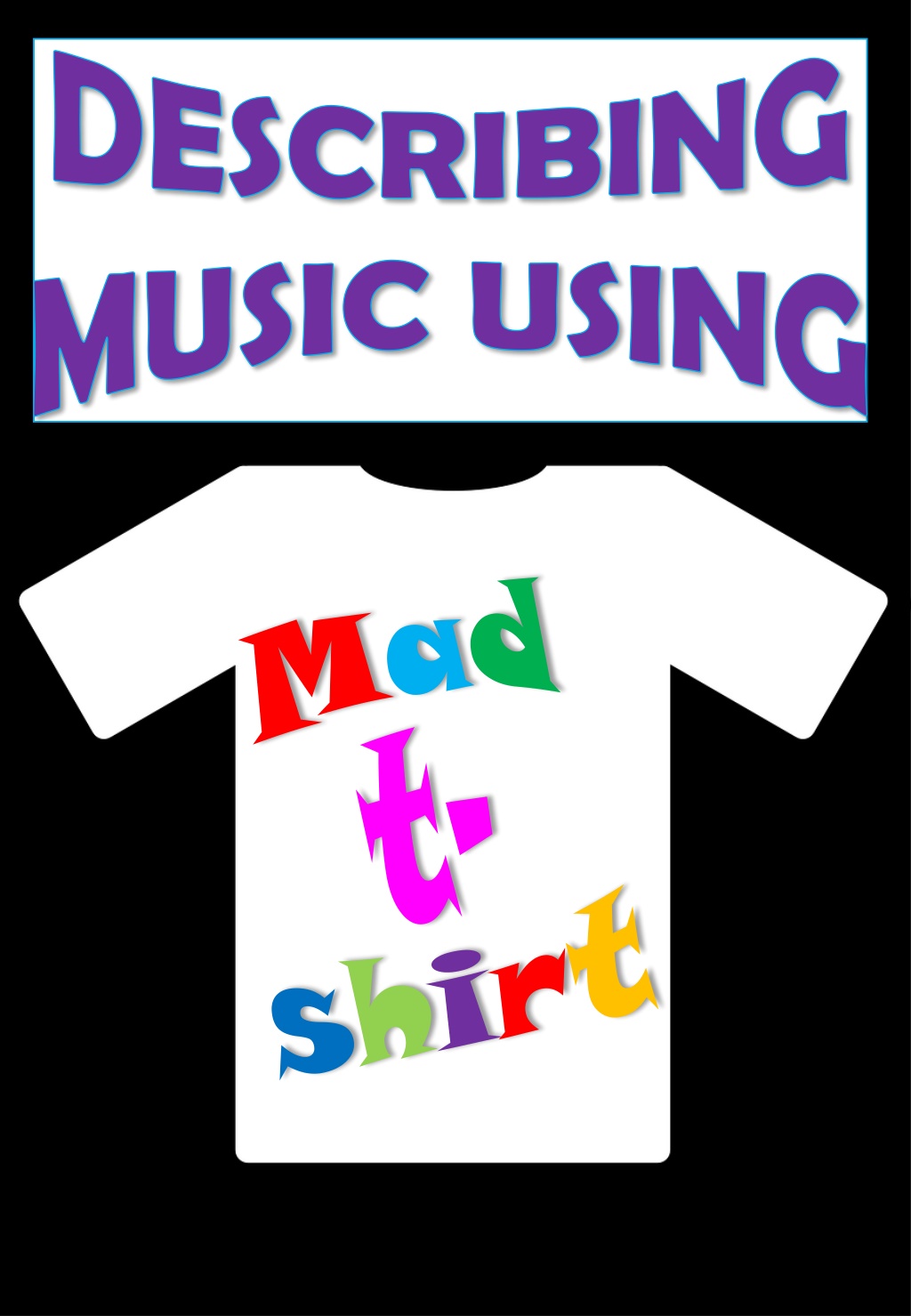


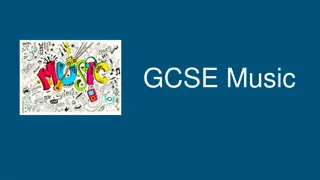
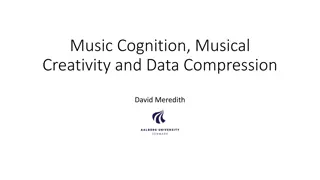

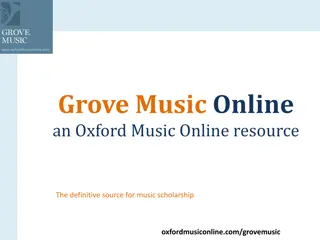

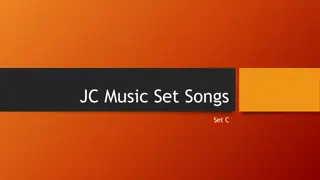

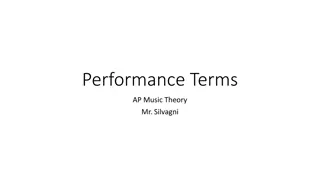
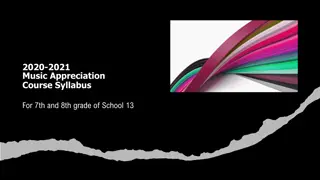
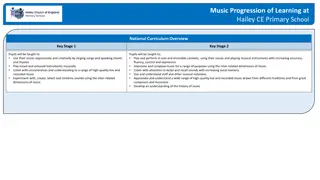
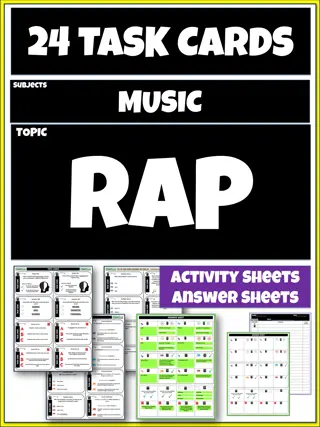
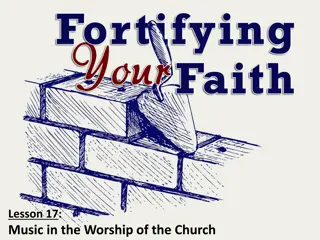
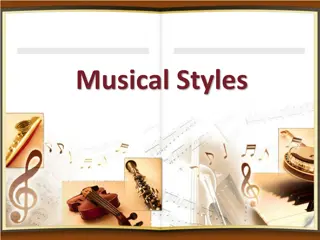
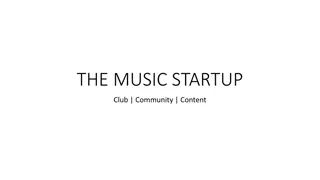
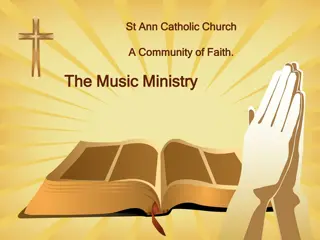
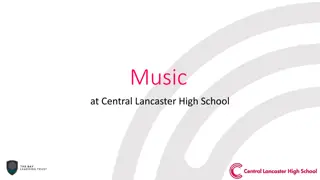

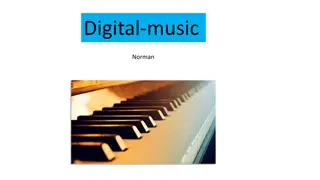
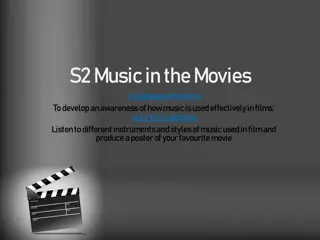
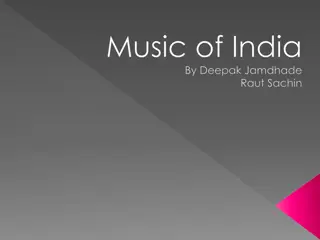

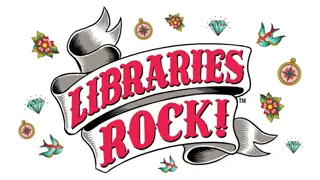
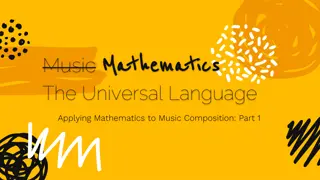
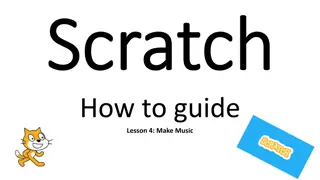
![Explore the Exciting World of Live Music Through [Insert Town/City] Census!](/thumb/148894/explore-the-exciting-world-of-live-music-through-insert-town-city-census.jpg)

